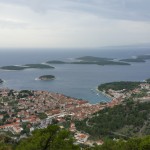
“It’s shit!” our driver bemoaned as he maneuvered his 4WD along the dirt track.
We were bouncing around Hvar Island on a unique tour called Secret Hvar, an excursion that brought us to viewpoints off the high ridges, back alleys of the medieval towns on the island, historic olive groves, remote plantations where the island’s famous lavender still grows, and so on. (And, for more about the Croatian coast, click here for our previous article.)
It was not an ideal day. The morning was foggy, with low rain-sodden clouds that dropped downpours every so often. Early on, at a viewpoint over the Pakleni chain of small islands off the tip of Hvar, we jumped out of the vehicle for a few murky pictures. As it started to rain, we jumped back inside and peered through the gloom at the islands. While waiting out the rain, our guide wandered back in time to explain the complex historical flow of rulers and residents on Hvar.
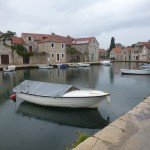
Later, at the highest point of the island’s wandering spine, “from which you could see Italy” on a good day, we found ourselves instead within a scrubby heath shrouded in fog. Some hours later, we were drenched during our walk through the picturesque harbor town of Vrboska, the so-called Venice of Hvar Island because of its lengthy canal.
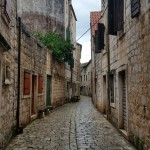
At least it was more damp than wet at another town, Starigrad, with its polished stone streets, baroque churches and austere monasteries. Though Starigrad felt abandoned in this weather, you could tell it could get quite touristy, what with the many shops selling sachets and ointments of lavender, a famous island crop, or bottles of olive oil, a nearly as famous crop, among the usual souvenirs and trinkets.
Back at the overlook, our guide was not complaining about the foul weather when he said, “It’s shit!” He was lamenting the quality of olive oil and lavender now being sold to unsuspecting visitors – and pitying the buyers.
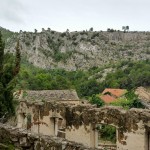
We learned about the olive oil around mid-morning at the abandoned town of Malo Grablje, now just dozens of crumbling buildings scattered around a hilly cleft in the shadow of the western ridgeline. Otherwise deserted, the town had just one building in habitable condition, one of the top restaurants on the island.
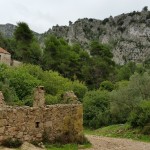
Malo Grablje’s fortunes over time reflected the various booms and busts of the island. The town had long prospered into the 19th century because of its wine until vine disease ruined the business. The town faded until an enterprising resident boosted the economy again through olives and olive oil. In the 1950s, however, they found they could not compete with Italian production…and the town was soon abandoned. Many of the town’s residents lit out for California…to try their hand again. Virtually all Croats there, whose largely common name survives, descend from the town’s emigrants.
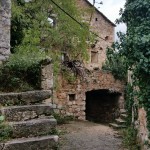
As for the oil, commercial production might have ceased, but the plentiful olive trees kept producing and enough of the skilled locals stayed to serve the tourist trade.
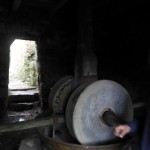
Now virtually everyone living on the island continues the old tradition of manually gathering the olives, and pressing them on large, manually turned stone wheels, one of which we saw at Malo Grablje. The oil-making is as much party as production: friends and neighbors come by to help turn the wheel, eat heartily and drink other liquids. Some automation just leaves more time for enjoying the festivities.
What they know is that the good stuff comes from the first pressing. The paste is scraped off the stone mill, and the oil is then squeezed out of the paste. And that good stuff is real extra virgin oil – a sublime liquid of low acidity (officially, less than .8%). The dirty little secret, however, is that extra virgin is not so inviolate as you might think, for acidity naturally increases inside the bottle without special care. So, just a few weeks later, you’ve got – as our guide sublimely put it – “shit.” And that’s not even counting the swill that comes from second pressings and other mishandling in commercial product.
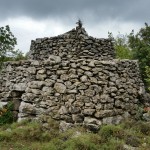
It turns out that most commercial product today is pretty bad too, according to Nancy Harmon Jenkins (“Buying Olive Oil, Knowledge Is Power,” an article found in Zester Daily). It should taste like new-mown grass, she says:
A well-made olive oil will have a good balance of three basic characteristics: the fruity flavors of sound, healthy olives, and the bitterness and piquancy (pepperiness) that are indications of the presence of antioxidants that make olive oil the fat you want on your table for all its great health benefits. What should be avoided is oil that has a flat tired flavor, that tastes of rancidity, that leaves your mouth feeling coated with fat or that tastes like a jar of commercial tapenade that was opened three weeks ago and got lost in the back of the refrigerator.
The public – and even top chefs she notes – have no idea what great oil tastes like.
Sadly, what the locals sell to the tourists in the town’s shops is the stuff the locals wouldn’t touch themselves. It’s not as terrible as our guide would have it, but certainly a lesser quality – and, by nature, rapidly degrading – product at touristy, extra virgin prices.
Yes, it’s exploitative and underhanded. But we couldn’t really fault the locals for trying to pick up an extra few dollars this way. Visitors, welcome as they are, drive the locals crazy during the season. From spring through fall, no one gets a break. It’s non-stop work of touring, hosting, serving, and catering. No time off. 16 hour days. Like squirrels who must store nuts for the winter, the islanders then live off the money they’ve put by to make it through the fallow period. Perhaps they just lose their balance during the wearying tourist season.
So it’s no wonder some try to extract a bit extra by selling the inferior oil as a fine consumable souvenir to visitors who wouldn’t know the difference. At least they head home happy with such a souvenir.
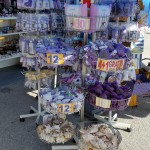
And then there’s the other major souvenir: lavender. As we observed, sachets and sprays were everywhere – in those tourist shops, in convenience stores, in pop-up stalls near the ferries where visitors idle. You can’t miss them. Why lavender?
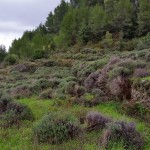
The climate here is perfect for the growth of very high quality lavender, an enterprise also dating back hundreds of years. During our tour, on the down-slopes of the island ridge, we frequently passed clumps of tall, undistinguished dark-leaved bushes tipped with microscopic flowerets. Harvesting the delicate flowers is a chore, a manual operation that yields very little of the precious oil out of tons of flowers. Yet, though the Hvar lavender has always been highly prized, it lost out commercially to cheaper, machine-harvested varieties grown on flat, cultivated fields in France and elsewhere. The island also suffered from several devastating fires that kept wiping out so many of the plants as well.
With such a reputation, an aromatic lavender souvenir from here naturally appeals to many tourists. We had heard that Hvar lavender is not what you’ll find in the shops, however, but oils imported from France instead. But then we heard that it was merely the plants that came from France, but are still harvested locally for the tourist trade. Whatever is in those packets, we suspect few would know the difference anyway. To our untrained noses, those sachets did smell good. And, toting away even a bit of labor-intensive lavender, at least the buyers can happily feel they carry some important 20th century history from the island.
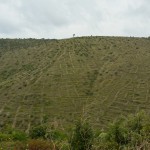
The locals are just as pleased, of course, to receive tourist money for those souvenirs. Given how hard the work at making all tourist visits good, they deserve a bit of extra income this way.
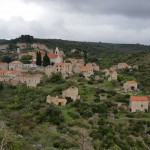
And if you come during the off season, you might find yourself invited up to Velo Grablje, a town near the ridgeline up from Malo Grablje. Dozens of well-kept buildings sprawl over the broad hillside, yet only seven aging landowners call the place home. And even they don’t stay here all the time, though the place can be a summer retreat for some more islanders or a place to go to mass on Sunday.
The permanent residents made their money before the island’s commercial trade ebbed, but they still come up here with friends and family to harvest olives and lavender when the tourists are scarce – or for festivals. Though centered on the highest quality oil and scent, the gatherings are now more a social experience than a money-making one. Here the islanders relax and celebrate the good life, one that takes the time to make good stuff and makes the time to share it.
Note: we have modified this article based on the much appreciated input from the folks at Secret Hvar. See the comment below.
(Also, for more pictures from Croatia, CLICK HERE to view the slideshow at the end of the Croatia & BiH itinerary page.)


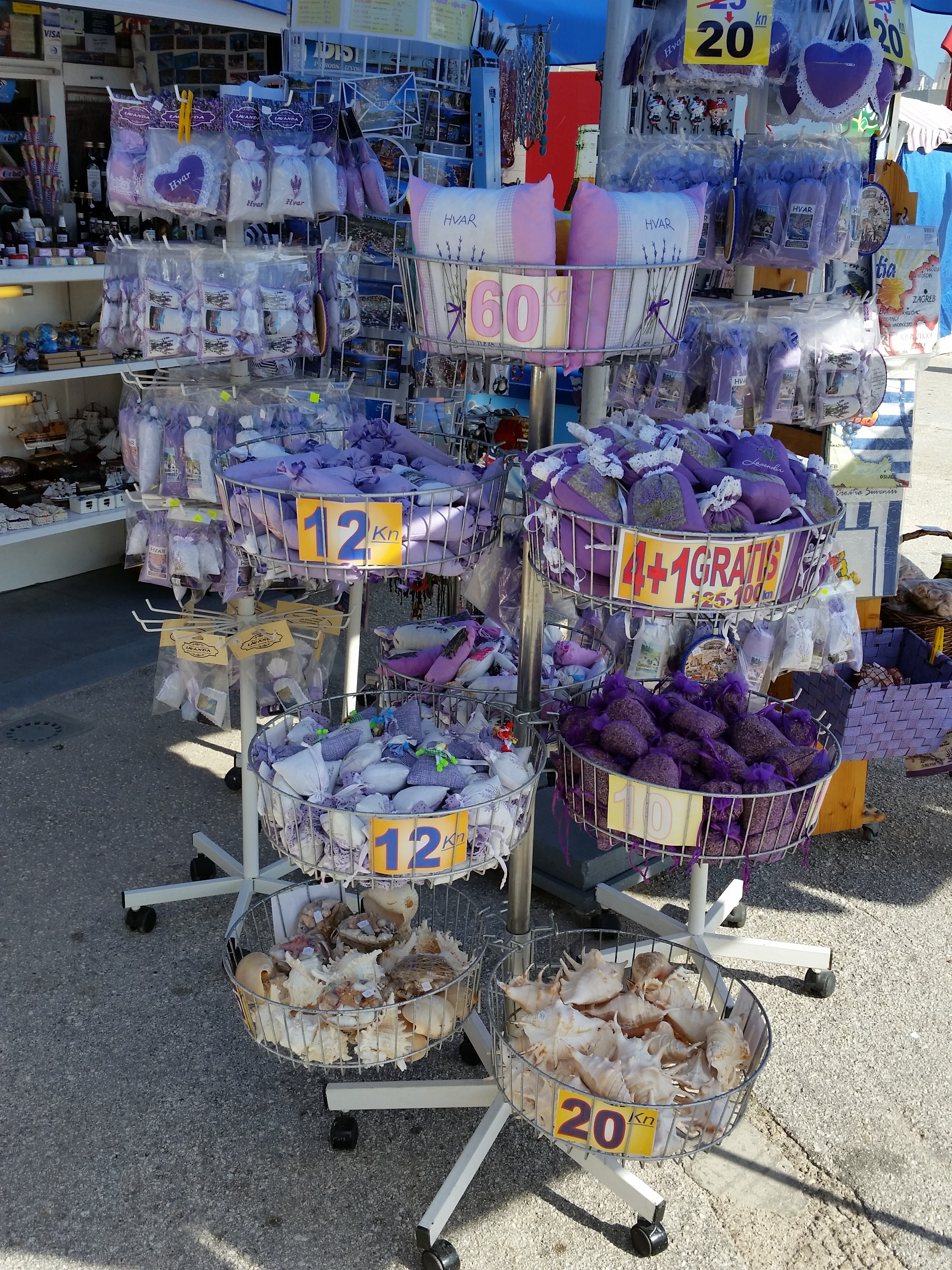
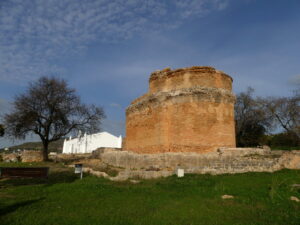
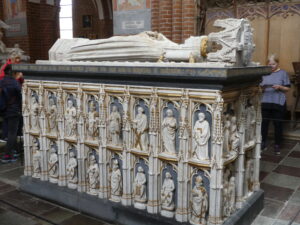
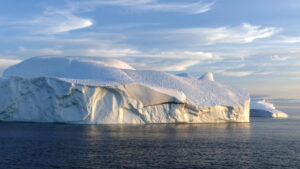
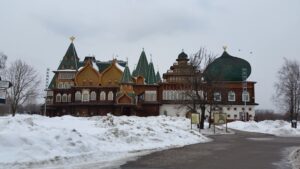
We received a very cordial note from the head of the Secret Hvar tours, Siniša Matković-Mikulčić (secrethvar.com), both amplifying what we recalled from our trip and making a few corrections to what we understood. We tried to fix our article accordingly. She wrote:
– first plants of lavender were imported from France at the end of 1920’s. We do not import any lavender to the island just to sell it to our visitors. All lavender what you can find in the shops and on the squares is from the island. Those are just remains of the remains from what we had in the past. Between 1950’s and 1970’s on Hvar island we produced 10% of the world’s production of lavender oil (Velo Grablje village 1%!!!). In those years people made lot of money and started to buy houses in Hvar town. In the same time in Hvar we build new hotels so we needed workers for them, that’s why all those villages are almost deserted nowdays (they moved also because of the school for children, shops, water!, health care….) Nowdays in Velo Grablje you have only 7 people who really live there. During summer months approx 20-25 people come back from Hvar to live in Velo Grablje (mostly older people who are sick of Hvar’s nightlife and heat), but all year long on Sundays people go back to Velo Grablje because of the Mess in the morning. Few times a year Velo Grablje is center of the island: during the Lavender festival at the end of June and during St. Cosma and Damian’s day (their patron saints) in September.
– why there are no more lavender fields on the island?: we had lots of forest fires (I remember some huge ones in 1997, 2003 and 2007 and lots of small ones) and many fields dissapeared in the fires, people replanted them again but after few years the burned again, after few times of planting/burning people just gave up also because the price of the lavender oil on the world market went down (also we couldn’t compete with new lavender growing countries where they plant lavender on the flat land and work with machines, on Hvar as you could see we planted them on small terraced fields where once we used to plant grapes where you need to harvest manually (please check the link before to learn more about wine industry of Hvar). Between 1950’s and 1980’s e exported Hvar’s lavender oil to France (!), England, Germany and Italy (rosemary oil too). What we have now on the island is enough just to refill small sachets, make some lavender oil in old fashion distilleries and make few soaps that you can find at stands on the main square.
– in 1920’s and later lavender was planted on the terraced fields where just 20-30 years people use to grow grapes (check what happened with grapes on the link below), those terraces look like spider’s web covering the island.
– At the end of October, beginning of November we start to harvest olives, it is a family job, we harvest them by hands (also grapes are handpicked) and it is some kind of family reunion as in the summer we do not see each other so much (and everybody is crazy and nervous because lots of work 😉 ). When olives are harvested we take them to the Cooperatives where they will press them for us, the olive press works in the same way like that one you saw in Malo Grablje but today you don’t need to push them: you just push the buttons and and take a cold beer and enjoy watching technology working for you 😉
Fell free to use my articles from:
hotspots.net.hr/en/2013/11/magicni-vinski-svijet-hvarskih-vinogorja/
hotspots.net.hr/en/2012/04/hvarska-kartolina/
hotspots.net.hr/en/2012/04/skriveni-hvar/